A famous 1989 NASA research study showed that plants are great at purifying the air. My home is full of plants so any study I can find that shows more is better, I’m here for it! Today I wanted to the best air purifying plants.
To be fair, there are many factors that may hinder how well they actually purify the air (how healthy the plants are, how much air flow your home gets, how many plants there are per square foot) it’s no doubt that plants have a positive impact on your life.
Plants release stress, make you happier and help you feel more energized. So whether or not plants purify your air as much as the NASA study shows, do yourself a solid and pick up an air purifying plant or two!
Table of Contents
7 Best Air Purifying Plants
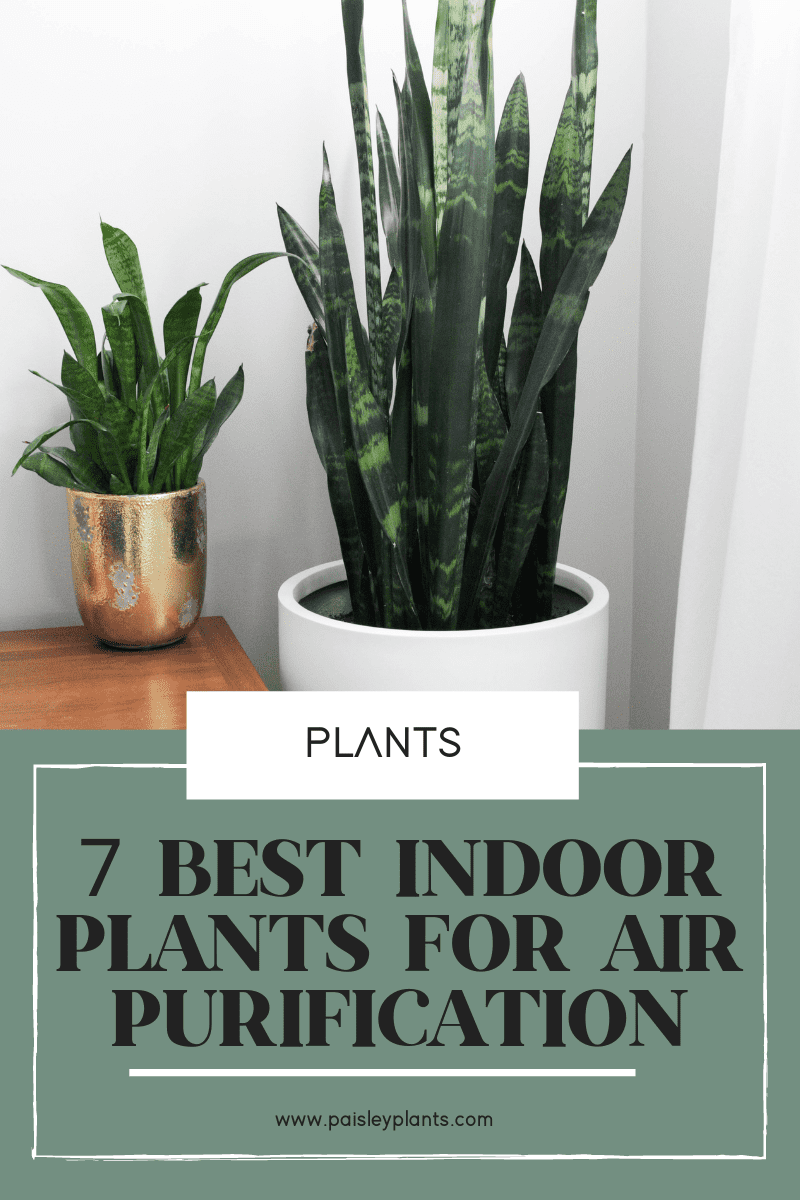
Paisley Plants is a participant in the Amazon Services LLC Associates Program, an affiliate advertising program designed to provide a means for sites to earn advertising fees by advertising and linking to Amazon.com. This post may include affiliate links which means I may earn a small commission if you shop using the links below at no additional cost to you. Thanks so much for supporting me and this blog!
1. Snake Plant
Removes 107 known air pollutants AND produces a ton of oxygen at night.
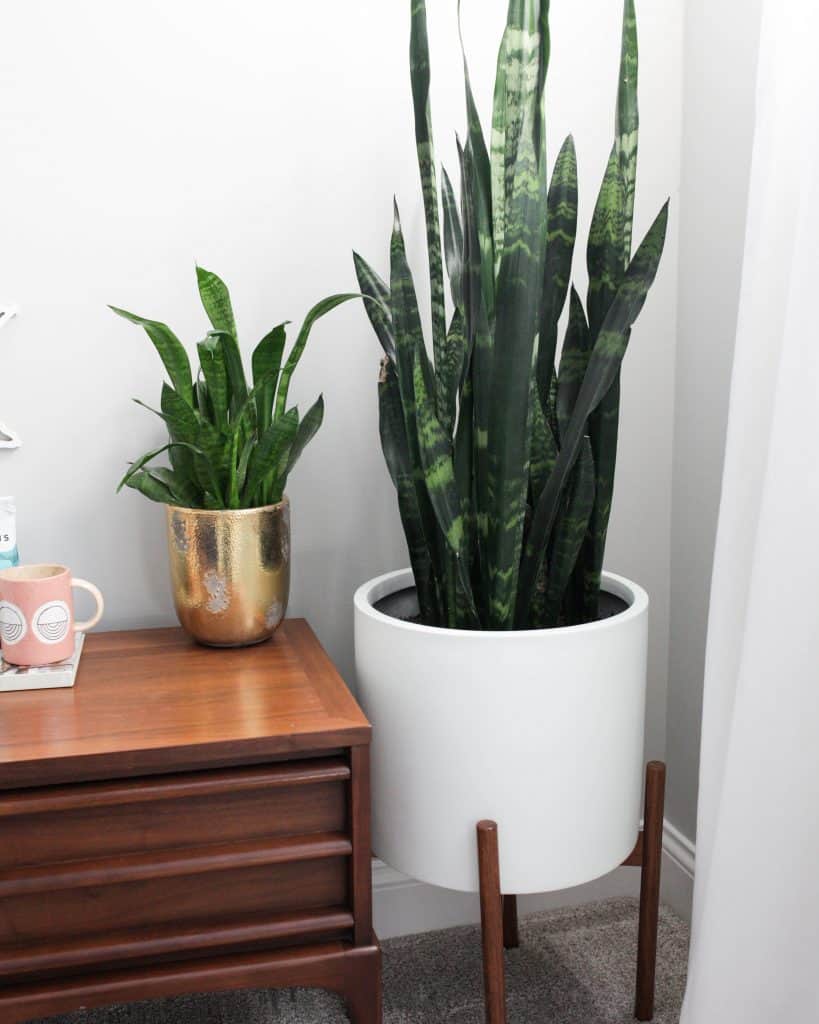
Snake plants are my favorite because they’re super easy to care for and make a huge difference in your home for air quality. They’ll grow in any light source and are just fine if you forget to water them for a bit!
I’ve started putting plants in all of our bedrooms because it produces so much oxygen at night! I have a full blog post on Snake Plant Care Tips so be sure to check it out!
2. Spider Plant
According to the site National Wildlife Federation, the National Aeronautic and Space Administration (NASA), which tested the abilities of three common houseplants to remove formaldehyde from the air, found in preliminary tests that spider plants were the champs, removing 95 percent of the toxic substance from a sealed Plexiglas chamber in 24 hours.
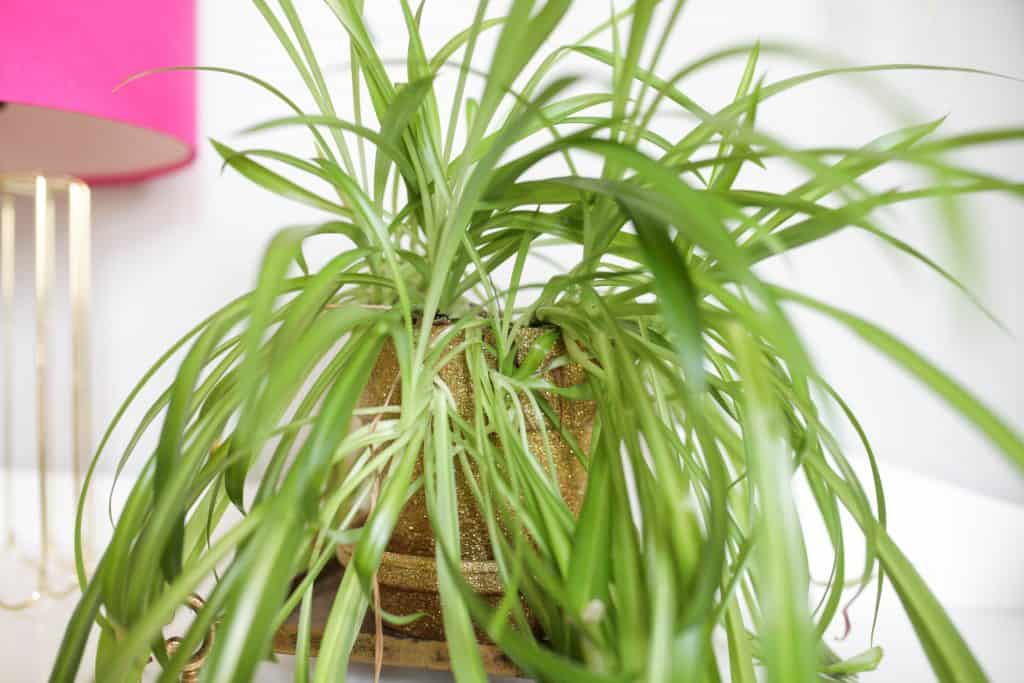
Spider plants are another easy plant to grow and often times shoot out babies that are even easier to propagate (more babies = more plants = cleaner air).
They like bright indirect light but can do ok with lower light environments. Don’t overwater a spider plant – they like to fully dry out in between waterings. They’ll likely need more water in the spring and summer than in the winter months.
If you notice brown tips on your spider plants, that can be from chemicals in your water. Try letting your water sit out overnight before watering them and that should help!
Ready more about spider plant care tips and how to propagate spider plants here!
3. Pothos
Pothos removes a significant amount of toxins including benzene, carbon monoxide, formaldehyde, toluene, and xylene.
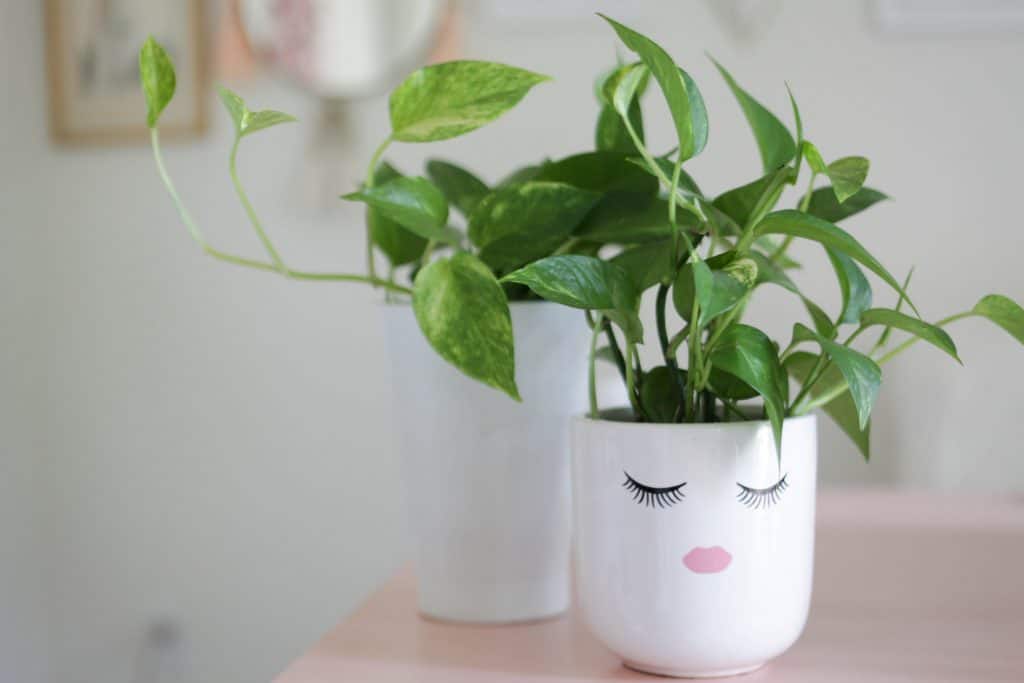
Pothos will always be one of my favorite plants because it’s easy to care for and even easier to propagate! I started out with one plant back in college and have propagated it into more plants than I can count – both for our home and a ton of my friends!
Pothos can grow in most light sources (low to bright) and likes to be watered weekly. They’re incredibly easy to propagate and make a great plant for beginners.
4. Rubber Plant
The Rubber Plant removes carbon monoxide, formaldehyde, trichloroethylene.
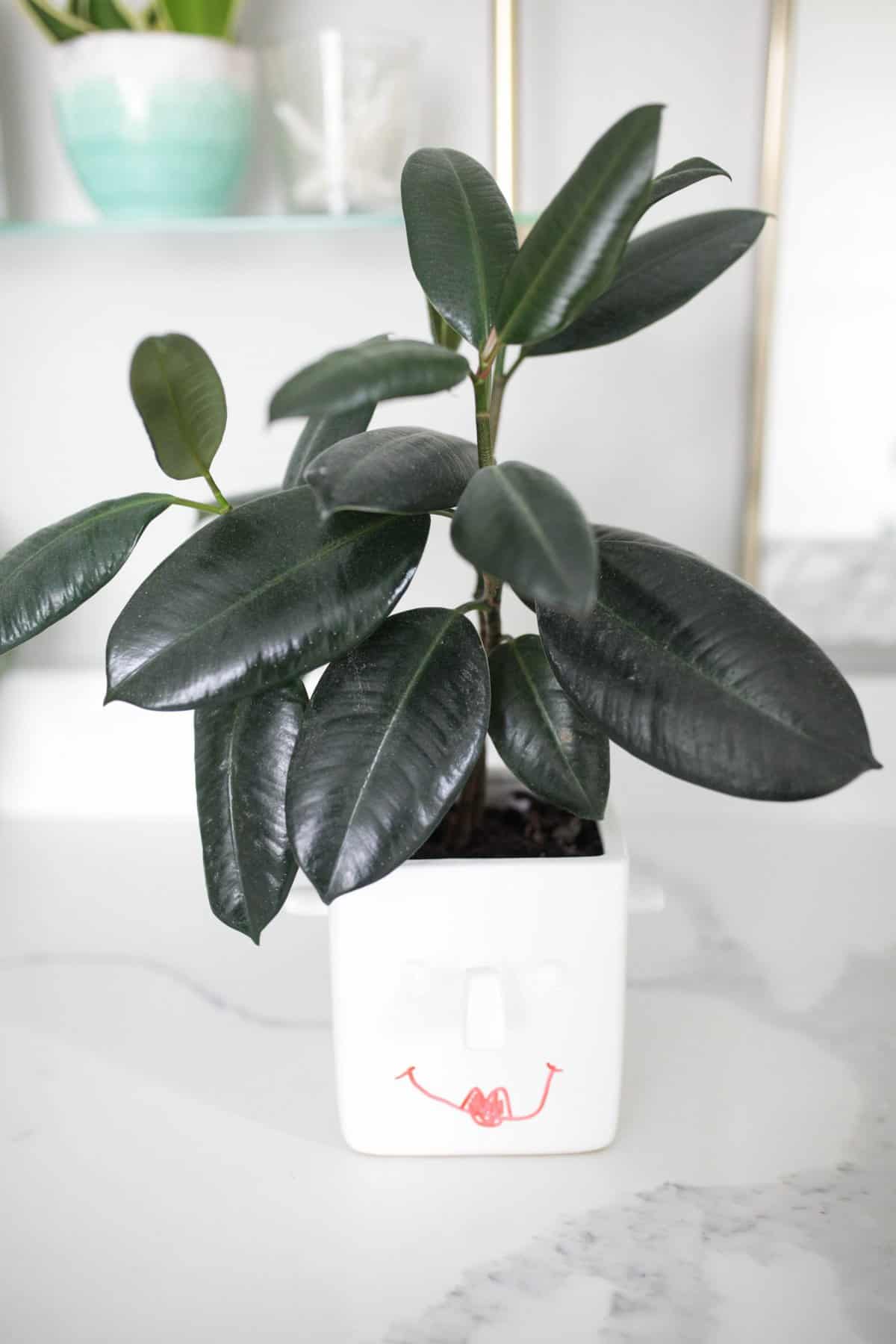
Rubber plants are beautiful, large plants. They can grow up to 10 feet tall in the right conditions!
They’re a plant that ideally grows best with a good amount of bright sun so keep that in mind when purchasing one. They won’t do well in low light.
Water your rubber plant every week or so. Don’t let it get too dry but also don’t let it sit moist. Find all my best Rubber Plant care tips here.
{Find them at the Sill}
5. Peace Lily
The Peace Lily removes alcohols, acetone, trichloroethylene, benzene and formaldehyde. It can improve your air quality by as much as 60% and keep shower tiles and curtains free from mildew.
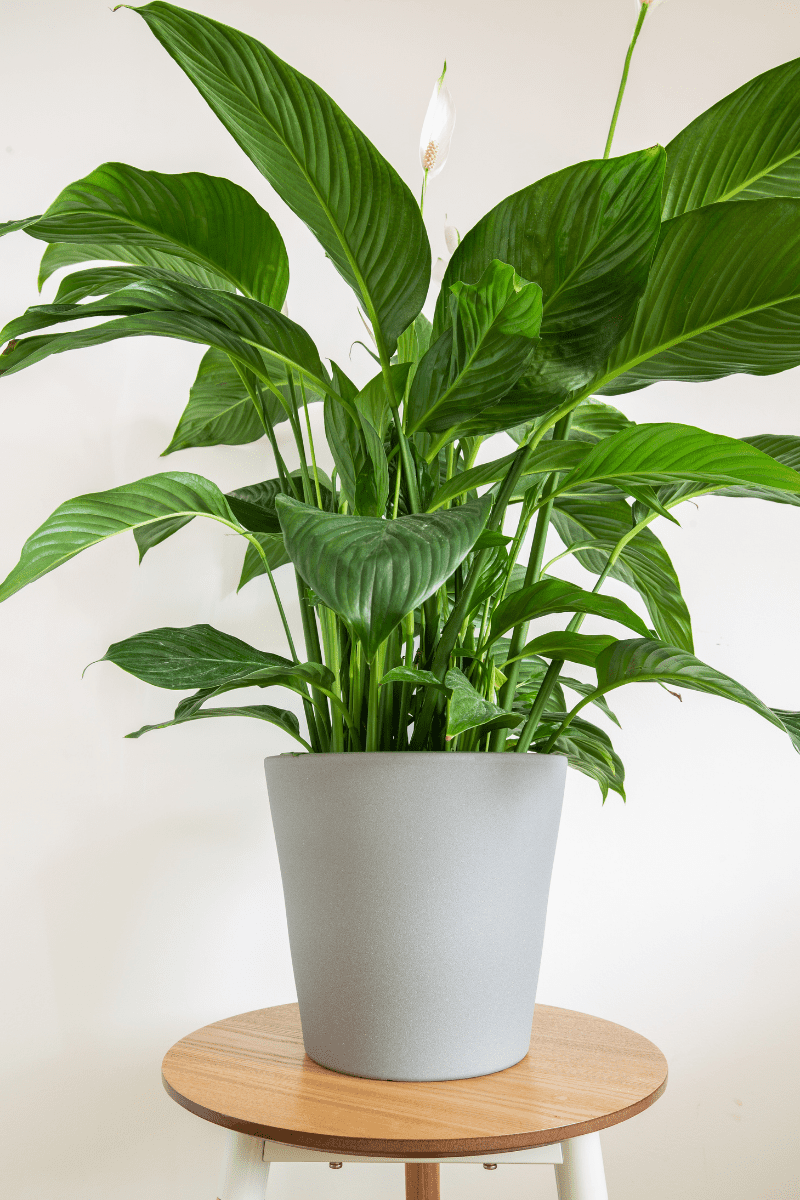
{Find them on Amazon}
I currently don’t own a Peace Lily but I love them! They grow best in indirect, medium sunlight to low light which makes them ideal for a variety of houses. Peace Lilies can tolerate fluorescent light which is why you’ll see them in office buildings!
They typically like to be watered once a week or once you see it drooping a little bit.
6. English Ivy
English Ivy is great at cleansing benzene, formaldehyde, xylene and toluene.
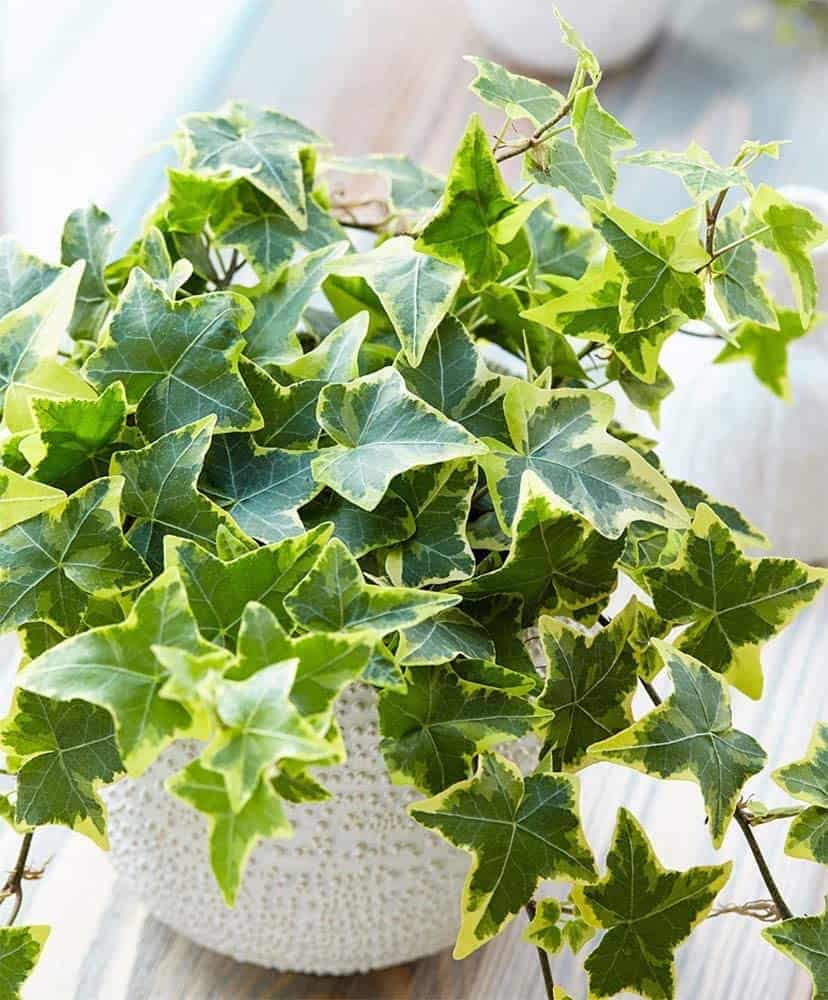
{photo via Amazon}
This is another plant I’ve never owned but is on my “to get” list! English Ivys are a fairly easy plant to grow needing indirect light and consistent watering (every week or so).
They’re popular outdoor plants but since they can spread so easily and quickly, they’re recommended for indoor use! They great climbing plants and look amazing in hanging baskets or wall pots.
They’re very low maintenance and one of the best plants for purifying the air.
*Learn how to propagate an English Ivy here!
7. Aloe Vera
Excellent at cleaning the air of Formaldehyde andbenzene.
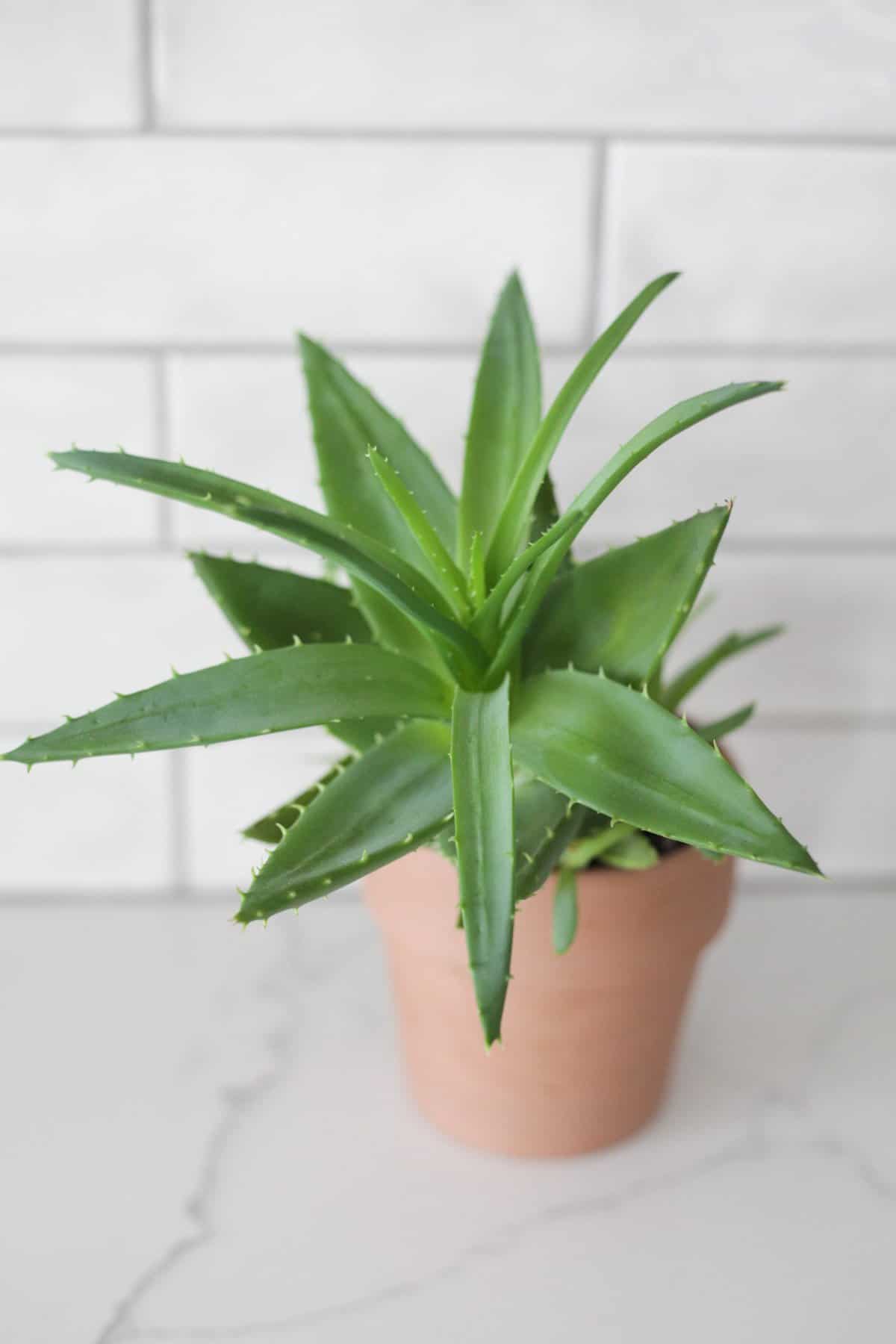
{image via the Sill}
Aloe Vera is so great for more than just cleaning the air! You can use the inside of the plant for burns and cuts. Last summer I got sun burned and literally just cut off pieces of my aloe plant every day to place on my burn and it healed up so quickly!
Aloe Vera likes full sun spots so be sure to place this in a window or in clear path of the sun!
Water every 2-3 weeks or whenever the soil seems really dry and the leaves begin to curl.
*Learn how to propagate an Aloe plant here!
They’re some of the best indoor plants for air purification and super easy to keep alive! Let’s check out all of the different varieties of pothos plants!
Want more?
The Weeping Fig Tree is another great plant that cleans the air!

